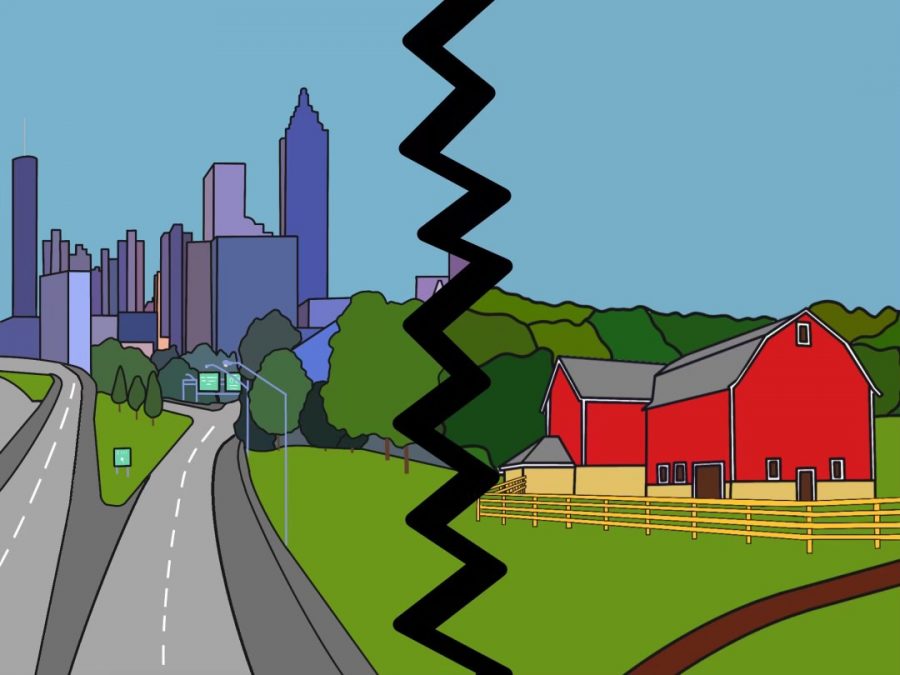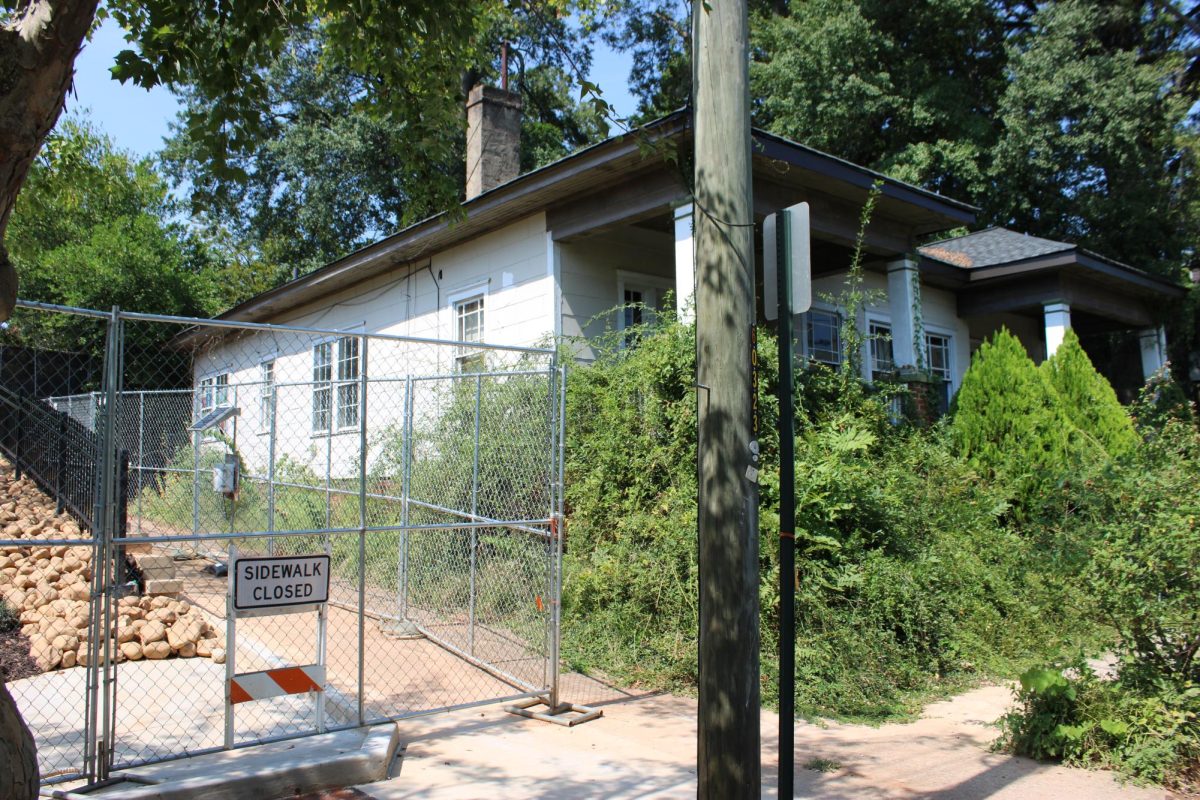It’s time to start talking about rural America: The disconnect between urban and rural America
Divisive sectionalism has contributed to one part of the chaos of 2020, however, this divide between rural and urban America brings on broader questions about the future of the country and what this divide could mean for America’s future.
January 7, 2021
With the anticipation of the new presidential administration mounting, tensions between rural and urban America have failed to stop. Divisiveness and sectionalism have become trademarks of the Trump Administration and an increasingly hostile nation. However, the rise of the Trump Administration begs broader questions about American divide and what can be done to solve that sectionalism. That conversation begins with addressing rural America.
The New York Times, notes the 2016 election, as the root of divisive sectionalism, highlighting rural voters as the driving force behind Trump’s term.
Economic differences drive rural and urban America farther apart. The Times observes that the 2016 election highlighted the disparity in economic gains, as rural areas often get left behind during times of growth.
The Pew Research Center finds the rates of poverty in rural areas (18 percent) and urban areas (17 percent) are similar. However, the New York Times affirms that factors such as work force, make-up of their economy and job market set them apart.
The same article notes that rural America is seeing a distinct increase in the median age of its population, and therefore a decrease in its productivity rate in comparison to urban America. The population of rural America is also seeing a significant decrease. According to the New York Times, while the U.S population has increased by 75 million since 1990, this increase has been centered in urban areas, while rural areas have seen a decrease of about 3 million people.
Following World War II, industrialization was the driving force in the rural economy. The end of the war launched the nation into a postwar economic boom, but now the New York Times finds that the industrial economy of rural America has come to an end. These industrialized jobs are no longer enough to sustain communities in rural areas. The New York Times remarks that there are fewer than 13 million workers in manufacturing across the country and the manufacturing jobs that do exist mainly seek high-skilled workers, most of whom live in urban areas.
As the coal and auto-manufacturing industries become increasingly obsolete, the main market that has continued to grow has been the technology industries. However, technology-based industries desire to remain in urban areas and surround themselves with highly-skilled urban workers rather than invest in rural communities. Urban communities, after all, already have the education, training and experience readily available to these companies that rural communities lack. This has contributed to the burgeoning economic divide between urban and rural America. With urban America continuing to speed ahead towards the future, rural America is left to scramble for solutions to their aging population, migrating work force and dissolving industries.
These frustrations and lack of acknowledgement have manifested in increasingly divisive elections and social strife. It is a vicious cycle; rural communities are overlooked because they don’t have the bustling economies and support urban communities do. But it is this lack of acknowledgement that widens this societal and economic gap. Rural areas are exploited by Republicans and neglected by Democrats. The Hill reports that one of the primary reasons Democratic don’t focus on rural areas is that they don’t need the votes in these areas, meaning they are less likely to acknowledge their needs, even when those needs align with the views of the Democratic party (such as the denouncement of tech corporations).
Bridging these gaps between rural and urban America begins with acknowledging their vast differences and attempting to reconcile those differences using specific federal strategies that target the issues of those areas (such as job expansion via renewable energy). Perhaps, urban and rural America will need different economic plans to be enacted simultaneously, but in order to combat increasing sectionalism, our public officials need to consider the broader issue of a dying community in desperate need of revival.
History has shown us how bad the sectionalism between rural and urban communities can become, like with the Civil War. Now, it is time for our federal representatives and administration to create comprehensive strategies for all parts of the country, no matter whether or not those states give a certain party votes. The American people need and deserve representatives for all parts of the country, not just the portions that extend them the most power.








